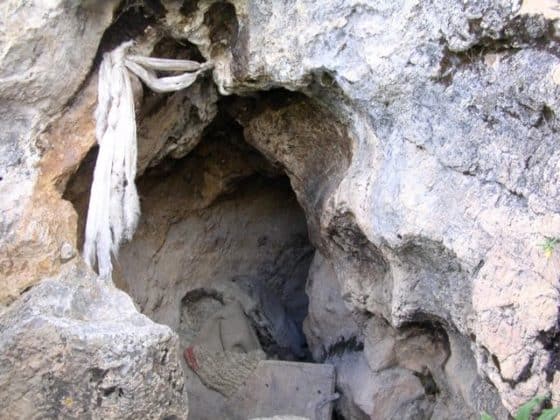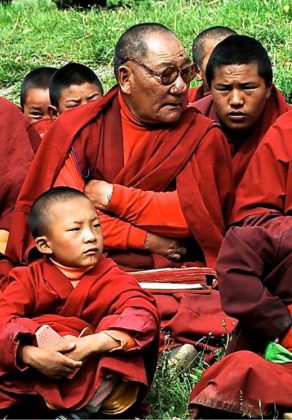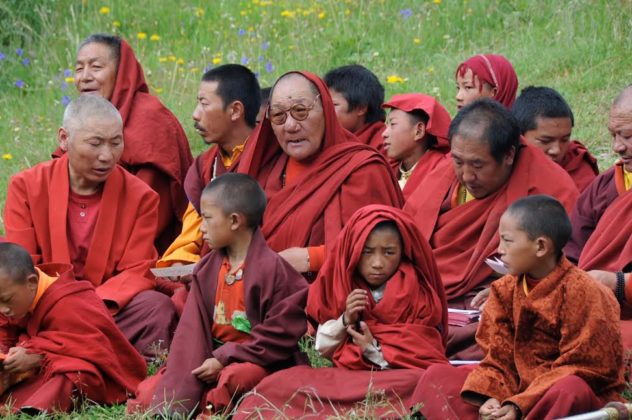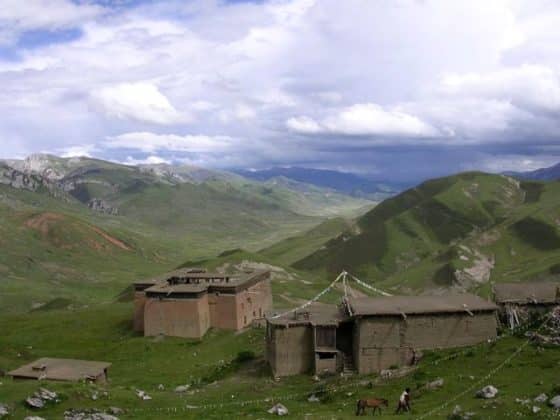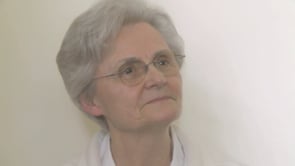Garap-la is the oldest surviving monk at Surmang Dutsi-til. I first met him in September 1987 on my first trip to Surmang. He was one of a handful of old monks who’d been allowed to return following Deng Xiaoping’s relaxation of the Cultural Revolution’s draconian measures, policies that resulted in the destruction of all monasteries in Tibet.
Now 79, he was close in age to Chogyam Trungpa Rinpoche. He is the last monk there who knew him as a contemporary. Now, Surmang Foundation gives him a small pension in exchange for living in a room next to the main gate of the clinic. He shared some of his story with me about a year ago. These notes disappeared and resurfaced recently. Like most of our human stories it is one of triumph and also one of great loss.
Garap-la: I am 79. Our great year, the year of untold sadness, was 1959, the year our Abbot, Chogyam Trungpa Rinpoche left Surmang forever. That was 54 years ago and I was 25. At that time Karma Ngudrup was Trungpa Rinpoche’s personal attendant. He was 50 years old then. The umdze of Surmang Dutsi-til was Lama Sonam Dorje. He was 68 at the time.
One night Trungpa Rinpoche just left Surmang Dutsi-til for Surmang Jyere-gon (ed. Jyere-gon is the only one of the Surmang Monasteries in the Tibet Autonomous Region and the monastery whose abbot is Trungpa Rinpoche’s younger brother, Damchu Tenphel Rinpoche). Jyere-gon sits in a treeless rolling green alpine escarpment ending at the Whiteface Mountain, said to be not just a place where Padmasambhava (8th C) buried terma, treasure and teachings for the beings of the future dark age; Whiteface Mountain is believed to be as holy as any place in Tibet, including Kailash and Mogyal Pomra.) Trungpa Rinpoche left , along with the youngest monks for a long practice session. Then I left.
At that time we had 170 monks at Surmang and while not the largest of the 12 or so Surmang monasteries, it is easily the holiest. At that time there were many refugees from the east, from Sichuan, moving ahead of the invading Chinese Army. The valley was full of these refugees’ tents. The atmosphere was rife with fear of the Chinese Army. They had destroyed many monasteries and were about to destroy many more. And Chinese and Hui Moslem businessmen arrived on the heels of this destruction to take whatever they could for resale. This was to be the fate of our beloved Surmang Dutsi-til.
Zonchok was an old monk and also Trungpa Rinpoche’s attendant. Another monk came to care for his horse. The trip to Jyere-gon took two days.
We were at Jyere-gon, for about 2 months, when Rinpoche announced he would find terma. Rinpoche had been famed as a terton, a terma finder, since he was 9. One day he entered the cave on the Whitefaced Mountain and stayed there 7 days by himself. He didn’t eat, and neither did he see anyone. One day he came out with the hair of Yeshe Tsogyal (sangyum, or consort of Padmasambhava). He also had some small pieces of paper with letters on them written by the khandrolma, the dakinis, in a special script.
After leaving the cave Rinpoche, accompanied by 6 people went to another cave, on the other side of the mountain, and found 4 phurbas. Karma Ngudrup and Trungpa Rinpoche remained at Jyeregon. The finding of a terma is no simple thing. There are ceremonies to do and translations into Tibetan as well.
At that time the army was in the monastery of Dutsi-til, had quartered there. Some from the monastery went to Jyere-gon to tell him the army was at Surmang. After the revealing of the treasures, Trungpa Rinpoche was scheduled to return to Dutsi-til. At that time had a dream that there was a big black rock blocking the road to back to Surmang Dutsi-til and he couldn’t get around it. A few days later someone at Dutsi-til wrote Rinpoche and told him not to come back. Garap-la said, he didn’t think it was a problem – the army wouldn’t kill him, they just wanted to take him to a meeting at Jiegu (Yushu, Chn.). Garap-la said that he had heard that this story was retold in Born in Tibet, how the officers at Dutsi-til wanted Rinpoche to come back for a “meeting.”
Rinpoche would have none of it. As we know, he never returned to Dutsi-til and began his escape from Tibet.
At that time Aten Rinpoche (Chetsang Rinpoche) and Khenpo Gangshar Rinpoche were at Shechen. Rolpe Dorje had died.
After one more month, I returned to Dutsi-til. I recounted the story of Khenpo Gangshar’s death. He heard that Gangshar Rinpoche raised pigs while in prison.
By 1959 the government removed all the treasures of the monastery to Nangchen and Xian. Surmang Dutsi-til was completely destroyed by locals for the fire wood.
By 1961 the monastery was no more and I left for the village of Tsokye, nearby. All the other monks left as well. For the time being, it was the end of Surmang Dutsi-til. I had to give up being a monk. We had no connection to Trungpa Rinpoche then. Then 7 years later, 1966, came the Cultural Revolution. Later, I heard that he wrote a letter in gold ink to his brother, Damchu Rinpoche, saying he was coming back. Then in 1987, Rinpoche went into the next world. And not long after that you arrived. At that time there were many of us old monks and you met them all -Tashi, Ahjia, Khenla, Sazi, Kukurepa, the one with all the dogs. Now I’m the last one.




